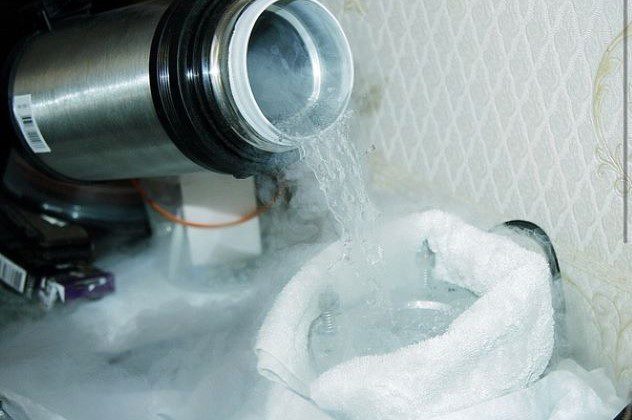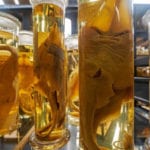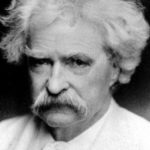 Weird Stuff
Weird Stuff  Weird Stuff
Weird Stuff  Politics
Politics 10 Political Scandals That Sent Crowds Into the Streets
 Weird Stuff
Weird Stuff Ten Bizarre Facts About The Doge Meme
 Our World
Our World 10 Ways Your Christmas Tree Is More Lit Than You Think
 Movies and TV
Movies and TV The 10 Coolest Stars to Set Sail on The Love Boat
 History
History 10 Things You Didn’t Know About the American National Anthem
 Technology
Technology Top 10 Everyday Tech Buzzwords That Hide a Darker Past
 Humans
Humans 10 Everyday Human Behaviors That Are Actually Survival Instincts
 Animals
Animals 10 Animals That Humiliated and Harmed Historical Leaders
 History
History 10 Most Influential Protests in Modern History
 Weird Stuff
Weird Stuff 10 Funny Ways That Researchers Overthink Christmas
 Politics
Politics 10 Political Scandals That Sent Crowds Into the Streets
 Weird Stuff
Weird Stuff Ten Bizarre Facts About The Doge Meme
Who's Behind Listverse?

Jamie Frater
Head Editor
Jamie founded Listverse due to an insatiable desire to share fascinating, obscure, and bizarre facts. He has been a guest speaker on numerous national radio and television stations and is a five time published author.
More About Us Our World
Our World 10 Ways Your Christmas Tree Is More Lit Than You Think
 Movies and TV
Movies and TV The 10 Coolest Stars to Set Sail on The Love Boat
 History
History 10 Things You Didn’t Know About the American National Anthem
 Technology
Technology Top 10 Everyday Tech Buzzwords That Hide a Darker Past
 Humans
Humans 10 Everyday Human Behaviors That Are Actually Survival Instincts
 Animals
Animals 10 Animals That Humiliated and Harmed Historical Leaders
 History
History 10 Most Influential Protests in Modern History
10 Fascinating Early Experiments in Cryogenics
If asked about cryogenics, a few things might come to mind. No, that urban legend about Walt Disney being cryogenically frozen is not true. You might also think about the equally fanciful Planet of the Apes, Demolition Man, or Futurama.
Cryogenics (from the Greek words for “cold” and “to generate”) refers to the creation of temperatures below what humans normally experience. Besides looking at ways to produce and maintain cold temperatures, cryogenics also involves studying the freezing of materials at cryogenic temperatures. Over the last two centuries, the field of cryogenics has advanced substantially.
So let’s take a closer look at ten early experiments in cryogenics.
Related: Top10 Absurd Scientific Experiments And Discoveries
10 James Arnott’s 1845 Tumor Experiments
Born in 1797, James Arnott was an English doctor who focused on cryotherapy. Before moving to London, the doctor worked as the senior physician at England’s Brighton Infirmary. Arnott was even the first to utilize extreme cold to destroy tissues. In 1819, Arnott used cryotherapy to freeze breast and uterine tumors while treating cancer patients.
Arnott mixed “two parts” ice and “one part” chloride of sodium to make temperatures between -0.4° and -11.2°F (-18° and -24°C). To perform experiments, Arnott even created his own equipment, which included a waterproof cushion, two flexible tubes to carry water from the impacted area, a reservoir for the mixture, and a sump (a basin to hold wastewater). Arnott performed the first cryosurgery in 1845. Arnott acknowledged the potential cryotherapy had for treating cancer as well as anesthetizing skin before surgery. Today, cryotherapy is still used to treat various types of cancer.[1]
9 Cailletet and Pictet’s 1877 Gas Liquefaction Experiments

In December 1877, within days of one another, Louis Paul Cailletet (as well as Raoul Pictet) arrived independently at methods to liquefy oxygen.
Cailletet was educated at Lycee Henri IV in Paris and was later employed at his father’s ironworks, where he worked on his studies. In 1869, Cailletet began to experiment with high-pressure chemistry. In December 1877, Pictet announced to the French Academy that he had liquefied oxygen. Two days after Pictet, Cailletet announced he had made the same discovery.
Both men acknowledged that cooling and compression were required to liquefy oxygen but utilized different techniques to do so. Cailletet achieved the liquefaction of gasses through the use of a compression apparatus. Pictet utilized the cascade method, which involved evaporating liquid sulfur dioxide, which turned carbon dioxide into a liquid. Instead of Cailletet’s method, this produced liquid gas in larger amounts, and its technique could be easier applied to other types of gas. Today, liquid hydrogen and helium play a critical role in cryogenics.[]
8 Irving S. Cooper’s 1961 Cryosurgery Experiment

Born in Atlantic City in 1922, Irving S. Cooper later received a medical doctorate from the University. He helped to organize the St. Barnabas Hospital Neurosurgery Department in New York City in the 1950s and 1960s. During his employment at St. Barnabas, Cooper became known for performing thousands of operations to help people with movement disorders.
Cooper had a habit of videotaping his patients’ surgeries. On December 25, 1961, Cooper received a wine bottle opener that lifted corks from bottles by injecting carbon dioxide. What fascinated Cooper was how a portion of the gadget cooled a section of the bottle. Cooper ended up utilizing this bottle-opening technology in surgery.
Patient confidentiality was not what it is today during the 1960s. Consequently, many current experts view Cooper’s experiments as controversial due to their confidentiality and boundary-pushing nature. Despite these concerns, Cooper created cryosurgery, which involves utilizing liquid gasses to remove diseased tissue.[3]
7 The 1965 Attempted Cryogenic Freezing of Wilma Jean McLaughlin
Wilma Jean McLaughlin almost became the first person cryogenically frozen in 1965 by The Life Extension Society, an organization that offered to freeze a person free of charge at its short-term freezing facility. On May 20, 1965, McLaughlin passed away from heart and circulatory issues. A group of cryogenic scientists attempted to freeze Mclaughlin, but the process failed. Additionally, Juno Incorporated, the company that allegedly supplied the capsule to store McLaughlin’s body, reported that the device was still being tested and that only a prototype existed.
The experiment that would have seen the freezing of McLaughlin was abandoned. Reports about what exactly prevented McLaughlin from becoming frozen are conflicted. Some reasons cited for why the experiment did not continue include disagreement among McLaughlin’s relatives and minister about the experiment, the local doctor not helping with the experiment, the hospital administration refusing to help with the experiment, the cryogenic capsule not being prepared, and the minister warning that laws were not in place. At the time of her death, the woman was also not aware that her husband wanted to freeze her.
While technically a failed experiment, McLaughlin’s situation pushed the Life Extension Society to perform its first cryo-freezing of a human being shortly after.[4]
6 The 1966 Aborted Cryo Freezing Experiments
In the early 1960s, the Cryo-Care Equipment Corporation in Arizona was the only company that did actual cryogenic freezings by utilizing liquid nitrogen. In 1966, the first human body was frozen after having been embalmed for two months.
The process was done by placing the middle-aged woman’s corpse in liquid nitrogen. The woman was then stored at an above-freezing temperature in a mortuary’s refrigerator. The late woman, who was from Los Angeles, was later thawed out a year later and buried by her loved ones.
The same year, the freezing of a San Francisco school teacher was similarly aborted because the man was dead for too long. Researchers decided that even if his brain could later be revived someday, it was damaged beyond repair. [5]
5 The 1967 Cryo-Freezing of Dr. James Hiram Bedford
A former University of California-Berkeley professor who passed away from renal cancer in 1967, Bedford was the first human to be cryogenically frozen and stored in the hopes that one day he will be revived.
Bedford used his own money and left $100,000 for cryogenic research when he passed away. Bedford’s surviving loved ones ended up spending more than this to defend his will and freezing against other relatives. His body was preserved by several doctors, who injected Bedford’s body with a solution of 15% dimethyl sulfoxide and 85% ringers solution. Bedford’s brain was likely not protected from these chemicals.
Until 1969, Bedford was stored at Edward Hope’s Crypto-Care facility in Phoenix, Arizona. In addition to being a pioneer in cryogenics, Hope was also a wigmaker who kept Bedford’s de-animated body in liquid nitrogen. Since 1982, Bedford’s corpse has been located at the Alcor Life Extension Foundation in Scottsdale, Arizona. In 1994, concerns about earthquakes, as well as regulatory issues, required Bedford and all 33 frozen corpses where he was stored to be moved to Arizona again. January 12th, the date that Bedford was cryopreserved, is still known as “Bedford Day” by those in the cryogenics field. [6]
4 Dr. Peter Mazur’s 1972 Hamster Tissue Experiments
Peter Mazur was a U.S. researcher who created new ways to preserve biological material through crypto preservation, which ultimately allows scientists to store or study biological material over an extended period. Mazur’s research during the 1960s and 1970s also led to various discoveries revealing elements that can damage cells during cryopreservation.
Born in New York City in 1928 to a housewife and business writer who lectured at Harvard, Mazur graduated from Harvard University and began experimenting with preserving fungus spores through dehydration. In his landmark paper, “A Two-Factor Hypothesis of Freezing Injury: Evidence from Chinese Hamster Tissue-Culture Cells,” Mazur found that cell exposure to high salt concentration and ice formation within the cell can lead to cellular damage.
Mazur’s work is influential because he determined the optimum cooling rate for each type of cell that is slow enough to prevent freezing but rapid enough to minimize exposure to high salt concentration. Mazur’s studies also helped to form the basis for significant advances in cryobiology and cryopreservation.[7]
3 The 1972 Freezing of Genevieve de la Poterie
The Cryonics Society of New York began freezing patients in the late 1960s. Relatives of the subjects paid for the cryo suspensions, while the organization was required to supply storage capsules. In 1972, the company froze its first child, which the Cryonics Society of New York was pleased about due to the publicity associated with the act
In 1972, Genevieve de la Poterie from Montreal became the first cryogenically frozen child. De La Poterie, the daughter of a pharmaceutical salesman and an opera singer, passed away from kidney cancer on January 25, 1972, at eight years old, at Saint Justine’s Hospital. The California-based Life Extension Foundation was supposed to freeze the child’s body. The organization did not do this properly, and the child’s body ended up worse off without a chance of being brought back to life. The body was then frozen by the Cryonics Society of New York.
The child’s body was stored by the Cryonics Society of California until 1994 when the “Chatsworth Disaster” occurred. This event saw the failure of the vacuum pump at the location where Nelson kept the bodies. This led to the destruction of many de-animated bodies.[8]
2 A Team at Monash University
The first human embryo was cryopreserved in 1983. Since this point, cryopreservation of human blood, stem cells, embryos, sperm cells, and oocytes have been involved in over 300,000 births. This initial cryopreservation was performed by a medical research team at Monash University. It was was tasked with reporting on various methods that could be utilized to achieve human pregnancy through in vitro fertilization (IVF) and the freezing of embryos before womb replacement.
In 1971, the program started the research that still underpins IVF today. The study included collecting eggs for research from women volunteers in Melbourne, Australia. In 1973, medical workers in the program achieved the first signs that IVF could be successful in treating infertility issues. In 1938, the Monash team performed another IVF experiment that involved a donated egg cell. Even though this pregnancy ultimately ended in miscarriage at 10 weeks, this experiment served as the basis for additional IVF experiments. Also, in 1983, the program achieved the first IVF births using frozen embryos. This experiment presented evidence that embryos frozen for a time could later be planted into a uterus and turned into a fetus.
In vitro fertilization has gone on to become a treatment method for both men and women who are experiencing infertility. IVF involves the fertilization of an egg cell outside a female’s body. Medical workers then inseminate the egg with sperm and implant the fertilized egg into the woman’s uterus. Additionally, Monash IVF is now recognized as one of Australia’s leaders in fertility programs.[9]
1 The 1983 Cryo Freezing of Miles the Dog
In 1983, Miles, a beagle, participated in a cryonics experiment at the University of California Berkeley. Named after the character that Woody Allen played in Sleeper, the dog had his blood substituted with a glycerol solution. The dog was then cooled to a few degrees above freezing. After spending fifteen minutes in suspended animation, the dog was revived. The researchers later presented details to a meeting of the Federation of American Societies for Experimental Biology in Washington.
Following the experiment, cryonics companies in the United States reported a large increase in the number of inquiries. At the time, scientists hailed this as a substantial step forward in cryogenics.
The Los Angeles Times later published an article clarifying that the dog was not placed at a temperature as low as the freezing level for humans who are cryogenically suspended. The article also noted that the researcher who performed the study was not exactly a Berkeley medical researcher.[10]








